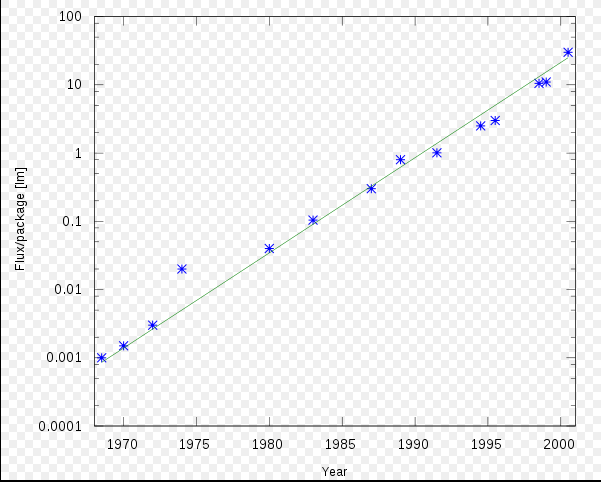Understanding The "Law Of LED Lights"
Posted by Richard Clarke on 18th Apr 2012

If you’ve ever considered switching from your existing light source to LED lighting but thought it might just be a fad or a flash-in-the-pan, there’s definitely something you should know.
Yes, a stunning forecast has been made about the rapid improvement in LED (Light-Emitting Diode) technology, which means that, by the end of the decade, LED lighting will have become the world’s predominant form of illumination.
Haitz’s Law
Dr. Roland Haitz, a research scientist at Agilent Technologies in Silicon Valley, California, devised a ‘law’ which states that every decade, the cost per lumen of brilliance falls by a factor of 10, and the amount of light generated per LED increases by a factor of 20, for any given colour of light.
The good doctor first publicly postulated Haitz's Law at the Strategies in Light conference in 2000. It attested to an exponential increase in lumen output from packaged LEDs and a corresponding reduction in dollar per lumen. Moreover, Haitz projected that Solid State Lighting products, such as LEDs, would reach a luminous efficacy of 200 lumens per watt of power by the year 2020.
The luminous efficacy of a source means how well it converts energy to electromagnetic radiation, and how successfully the emitted radiation is detected by the human eye.
Dr. Haitz’s projections have proven very accurate through the stellar evolution in LED technology from 1970 to 2000, as the graph below shows:
 Thus far, Haitz's assertions have proven accurate and, according to certain reports, the improvements have even exceeded his own expectations.
Thus far, Haitz's assertions have proven accurate and, according to certain reports, the improvements have even exceeded his own expectations.
Indeed, multinational semiconductor and electronics manufacturer Cree has already developed a prototype LED capable of achieving an efficiency of 231 lumens per watt, and promises another with a record-breaking 303 lumens per watt in the next few years.
The incredible accuracy and prescience of Doctor Haitz’s predictions cannot be underestimated, especially in light of the fact that production of wasteful and inefficient halogen bulbs is due to be completely phased out in the UK by the 1 st of September 2018.
The big phase out has been proceeding apace across the rest of the world since 2005, but it means at least that LED lighting is set to become Britain’s foremost source of illumination a whole two years ahead of Haitz’s expectations!
LED lights and bulbs are already cost-effective and energy-efficient, many outperforming equivalently bright halogen bulbs by more than 90% in terms of electricity consumption.
Switching just one 50 watt halogen bulb for an energy-efficient 3.3 watt GU10 LED 80 SMD will save you a massive £18.75 over the course of a year, based on an electricity cost of 13.75 pence per kW/h (kilowatts per hour).
Given the current efficiency of LEDs, together with the promises of Haitz’s Law, it seems like wonderful news for anyone considering replacing their outmoded halogen lights with LEDs, and means that that the future is more energy-efficient, more affordable and above all, brighter.
If you’d like to discuss the cost-related implications of switching to LED lighting, why not talk with our experts?
You can reach us on 0116 321 4120 or send an e-mail enquiry to cs@wled.co.uk.





